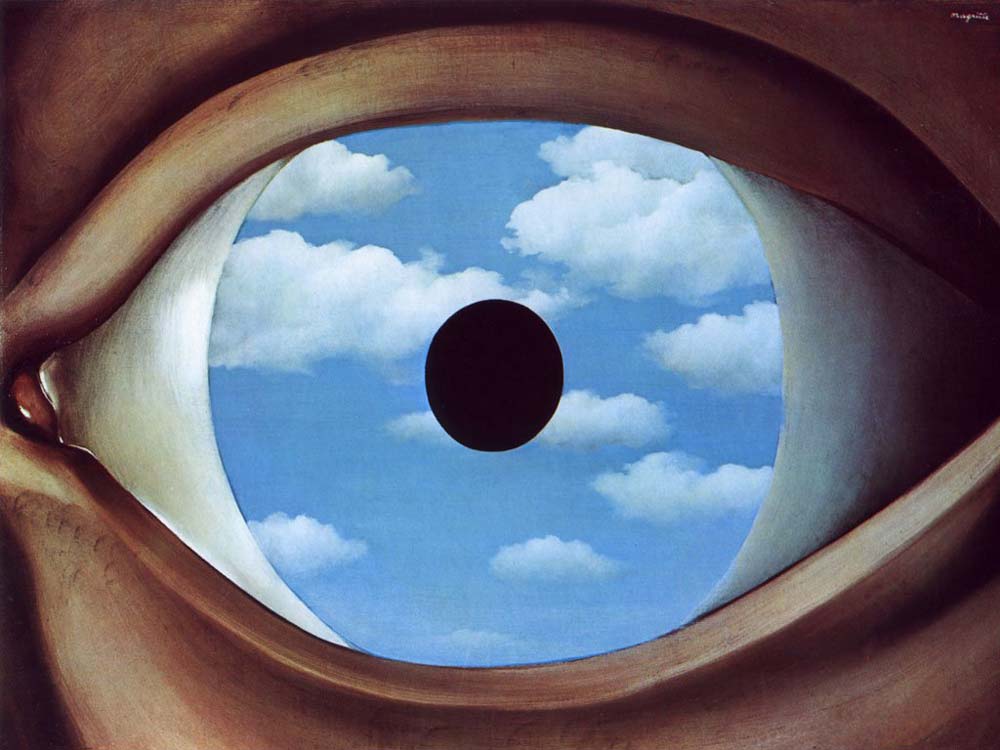| The False Mirror | |
|---|---|
 |
|
| Artist | René Magritte |
| Year | 1928 |
| Medium | Oil on canvas |
| Location | Museum of Modern Art, New York, USA |
| Dimensions | 21 1/4 x 31 7/8 in 54 x 80.9 cm |
| René Magritte Famous Paintings | |
| The Son of Man, 1964 | |
| The Treachery of Images, 1928–29 | |
| The Human Condition, 1933 | |
| Golconda, 1953 | |
| The Listening Room, 1952 | |
| The False Mirror, 1928 | |
| Elective Affinities, 1933 | |
| The Mysteries of the Horizon, 1955 | |
| The Empty Mask, 1928 | |
| Complete Works |
Like many works by René Magritte, The False Mirror defies normal insights of the viewer. It was completed in 1928. It is one of many pieces that were created in between World War I and World War II as artists attempted to come to terms with the horrible conditions that these conflicts caused. Many of Mr. Magrittes counterparts such as Max Ernst, Man Ray and Salvidor Dali created similar renderings incorporating the human eye. It is currently shown at New York’s Museum of Modern Art.
Meaning
The use of this particular body part is telling in that it seems to be challenging the viewer to question whether what they are seeing corresponds with what they think they know. Magritte surprises us immediately by removing the eyes’ pupil from its usual location and positioning it in the center of the sky. It is surrounded by what appears to be a normal optic opening, although not necessarily of human flesh. The painting is for the most part symmetrical in both its vertical and horizontal lines. There is also symmetry of color with the black pupil drawing your attention.
Art Style
The False Mirror is an allegorical painting done by Mr. Magritte in the Surrealist art form during his Surrealist period in Paris. The style of this type of art work has also been referred to as “magical realism.”